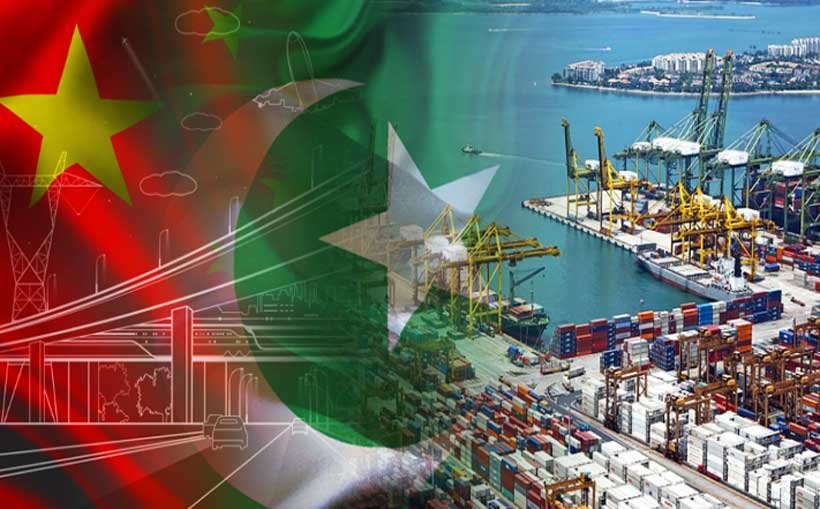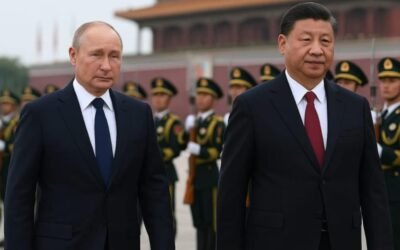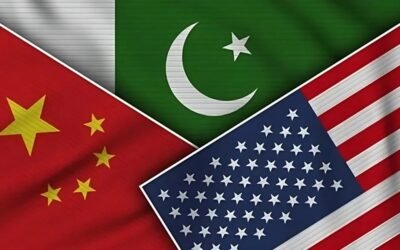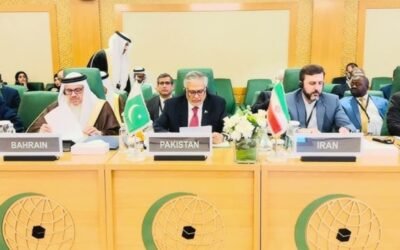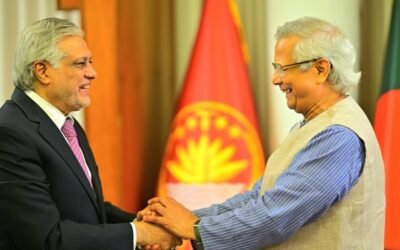Pakistan and China have long described their relationship as an “all-weather strategic cooperative partnership,” based on shared interests and mutual trust. For years, China has been a dependable ally, offering diplomatic support and essential aid. Now, this partnership is entering a new, more intensive phase. Beijing’s investment in Pakistan is not only continuing but also growing, fueled by the massive Belt and Road Initiative (BRI), increased security cooperation, and the development of the China-Pakistan Economic Corridor (CPEC) into its ambitious CPEC 2.0 phase.
A Deep-Rooted Friendship
The bond between Pakistan and China goes back to the early days of their nations. Pakistan was among the first countries to recognize the People’s Republic of China in 1950. This early diplomatic effort set the stage for a relationship based on strategic interests, including Pakistan’s goal for industrial growth and its need to balance regional powers. Over the years, this friendship has grown to include key areas like nuclear cooperation (beginning in 1986), military partnership, and major infrastructure projects such as the Karakoram Highway. China has become Pakistan’s biggest arms buyer, accounting for nearly 63% of Chinese arms exports.
The Belt and Road Initiative (BRI) and CPEC 1.0
The China-Pakistan Economic Corridor (CPEC) is the flagship project of China’s ambitious Belt and Road Initiative (BRI). Launched in 2013, CPEC was designed as a game-changer for Pakistan’s economy, linking Western China to the Arabian Sea via Gwadar Port through an extensive network of infrastructure.
CPEC Phase 1.0 (roughly 2013-2023) primarily focused on addressing Pakistan’s critical energy shortages and improving its infrastructure.
- Energy Projects: This phase saw the completion of 14 power plants, adding a combined 10,900 MW to Pakistan’s energy capacity. This significantly reduced Pakistan’s power outages.
- Infrastructure Development: Key projects included highways, bridges, and tunnels, which helped cut down travel times and improve connectivity, especially in Punjab and Sindh. The Gwadar Eastbay Expressway is a notable example.
- Job Creation: CPEC projects created over 200,000 direct jobs during Phase 1, with millions more expected in the long term.
China’s investment under CPEC has reached approximately US$62 billion, making it the largest source of Foreign Direct Investment (FDI) in Pakistan.
Why Beijing’s Investment Is Growing – CPEC 2.0
As CPEC enters its second phase, known as CPEC 2.0, Beijing’s investment is set to grow even further. This phase aims for deeper collaboration, moving beyond basic infrastructure to focus on industrialization, technology transfer, and socio-economic development.
- Diversified Focus: CPEC 2.0 introduces five main thematic corridors: Growth, Livelihood-Enhancing, Innovation, Green, and Opening-Up/Regional Connectivity. This indicates a shift toward more sustainable and inclusive growth.
- Industrialization and SEZs: A major push is to establish Special Economic Zones (SEZs) across Pakistan. These zones are designed to attract Chinese and other foreign investors, facilitate industrial relocation, and boost Pakistan’s manufacturing base. Rashakai SEZ is projected to create 200,000 jobs alone.
- Technological Advancement: CPEC 2.0 focuses on advancing technology-driven industries, promoting innovation, and transferring cutting-edge technologies from China to Pakistan. This includes collaboration in artificial intelligence, big data, and communications.
- Socio-Economic Development: This phase also focuses on poverty alleviation, improving education and healthcare, and accelerating energy transitions towards green and sustainable models. For example, the Chashma Nuclear Power Project Unit-5 (C-5) will add 1,200 MW of power and create approximately 40,000 jobs during construction.
- Favorable Financing: The financing mix for CPEC projects includes equity investments, grants, and concessional loans. The weighted average interest rate on all Chinese loans under CPEC is approximately 2%, which is the lowest Pakistan has secured from any bilateral or multilateral source. These loans are tied to productive, revenue-generating projects, ensuring returns exceed costs.
This 4-minute clip highlights core elements of CPEC 2.0 — job creation, robotics, and skill-building initiatives — supporting your discussion on industrial growth, technology transfer, and socio-economic development.
Security Cooperation
The growing economic ties are backed by strong and evolving security cooperation, which is crucial for the continued success of CPEC and broader bilateral relations.
- Largest Arms Supplier: China is Pakistan’s largest arms supplier, accounting for nearly 63% of Chinese arms exports. This includes the joint development of fighter jets, such as the JF-17 Thunder, and advanced training aircraft.
- Counter-terrorism Efforts: Both nations have reaffirmed their determination to combat terrorism, with Pakistan ensuring the safety of Chinese personnel and projects in Pakistan. China also supports Pakistan’s efforts to build its counterterrorism capacity.
- Naval and Air Power: China has invested heavily in Gwadar Port, viewed by some as a possible naval launching point in the Indian Ocean. Joint military drills and cooperation on developing military and weapons systems keep growing.
Beyond CPEC: Broader Engagements
The Pakistan-China pact extends beyond CPEC and security, covering various other sectors:
- Media and Cultural Exchanges: Pakistan and China recently signed an agreement to strengthen media cooperation, cultural exchanges, and journalist training. This aims to share content, undertake joint media projects, and boost cultural understanding.
- Strategic Coordination: Both nations share similar views on key geopolitical issues, with Pakistan backing China’s stance on Taiwan, Xinjiang, and the South China Sea, while China supports a peaceful resolution of the Kashmir conflict.
- Regional Connectivity: Pakistan and China are working to extend CPEC into Afghanistan, aiming to incorporate it into the regional economic framework. They are also restoring agreements, such as the Quadrilateral Trade in Transit Agreement, to enhance regional connectivity with Central Asia.
- This tweet from the Ministry of Foreign Affairs – Pakistan provides a concise and authoritative confirmation that CPEC 2.0 is underway.
The Chinese Ambassador, Jiang Zaidong held meeting with Deputy Prime Minister/Foreign Minister Senator Mohammad Ishaq Dar @MIshaqDar50. They reaffirmed the Pak-China All-Weather Strategic Partnership, which is a cornerstone of bilateral relations between the two states.
During… pic.twitter.com/oP2AcZMDzX
— Ministry of Foreign Affairs – Pakistan (@ForeignOfficePk) January 28, 2025
Challenges and Shared Future
Despite the strong bond, challenges remain. Pakistan’s economic stability is crucial for fully realizing CPEC’s potential. Security concerns for Chinese workers also stay a priority for Beijing. However, the commitment from both sides to overcome these obstacles is clear. Pakistan continues to carry out reforms aimed at attracting more investment, and China stays a reliable partner.
Conclusion
The “China Pact” is a defining feature of Pakistan’s foreign policy and economic future. Beijing’s investment is not just growing; it’s deepening, diversifying, and becoming more integrated into Pakistan’s national development strategy. This comprehensive partnership, spanning infrastructure, industry, energy, technology, and security, is reshaping Pakistan’s economic landscape and strengthening its regional standing. As CPEC 2.0 unfolds, this “all-weather strategic cooperative partnership” is set to drive Pakistan towards greater prosperity and enhance its role in the evolving global order.
References
- Finance Division, Government of Pakistan. (2025). Highlights – Pakistan Economic Survey 2024-25.
- PIDE. (2025). Discourse – China Pakistan Economic Corridor.Associated Press of Pakistan. (2025, January 10).
- CPEC 2.0 – CPEC 2.0 – Entering an era of magnificent growth
- The Dayspring. (2024, June 8). CPEC 2.0 and Regional Connectivity: Opportunities and Challenges – The Dayspring | Youth Centric Newspaper of Pakistan
- SpecialEurasia. (2025, June 10). Geopolitics of China-Pakistan’s Relations – SpecialEurasia
- JPSC. (2024). PAKISTAN’S ECONOMIC RELATIONS WITH CHINA (2015-2023): CHALLENGES, OPPORTUNITIES AND POLICY LESSONS.
- Associated Press of Pakistan. (2025, March 29). Pakistan and China committed to building closer community of shared future in the new era:

